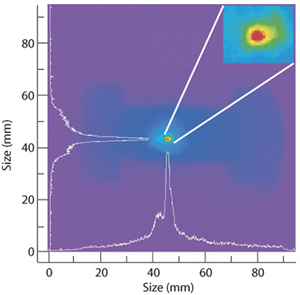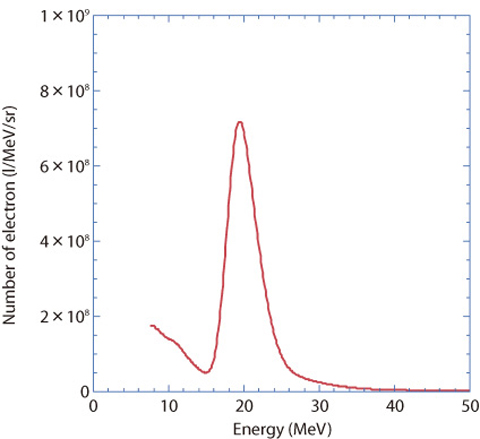Fig.4-30 Schematic of laser acceleration

Fig.4-31 Profile of generated electron beam

Fig.4-32 Energy spectrum of the electron beam
The plasma wakefield generated by an intense laser pulse accelerates plasma electrons (laser acceleration: Fig.4-30). The laser acceleration becomes a compact short pulse electron beam source. This electron beam is suited for the next generation high quality electron beam injector and measurement of a structure change of molecules.
An electron beam generation experiment was conducted with a Ti:Sapphire laser, which has a pulse width of 70 fs (femto second: femto = 10-15) and a power of 3 TW (tera watt: tera = 1012). The electron beam profile and the energy spectrum are shown in Fig.4-31 and Fig.4-32, respectively. In this experiment, 20 MeV of quasi-monoenergetic electron beams are generated in the angle of 7.5 mrad. The emittance of the electron beam is 0.4 f? mm mrad and the charge per laser shot is 0.8 pC (pico coulomb: pico = 10-12). The electron beam source is smaller and of higher quality than conventional accelerators. This is the world's first quasi-monoenergetic electron beam generation with a laser of intensity as low as 1018 W/cm2. The generated electron beam is about 10 fs due to the very short plasma period of a few tens fs, and can be used for the measurement of high-speed phenomena.
In order to use the electron beam for applications, it is necessary to generate a stable electron beam. We conducted a theoretical analysis and a particle-in-cell simulation to solve the problem of the unstable electron beam. The electron beam produced by one laser pulse is sensitive (unstable) to the parameters of laser intensity and the plasma density. In order to generate a stable electron beam, we propose a head-on collision of two laser pulses. The head-on collision can generate a high-quality stable electron beam due to wide stable range.
This study realized a compact high-quality electron beam source by laser-plasma interaction, which should enable various applications.